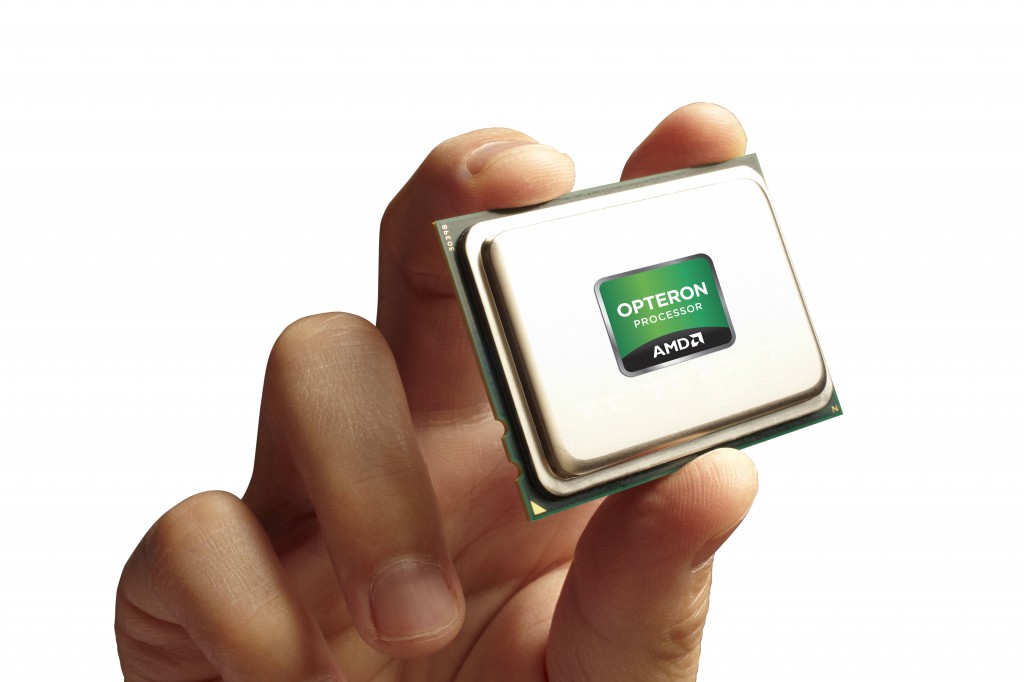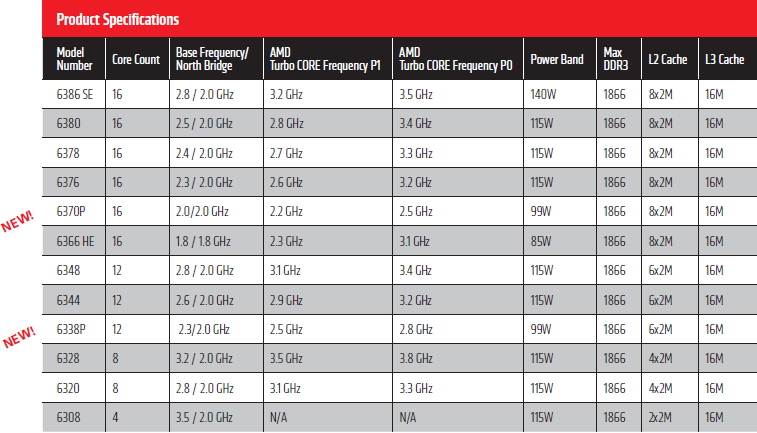Advanced Micro Devices on Wednesday introduced two new server-class Opteron central processing units (CPUs) based on the code-named “Warsaw” design. The new chips boast slightly better power efficiency compared to predecessors, but feature similar performance and a set of technologies compared to existing code-named “Abu Dhabi” multi-core processors. Initially, there will be only two Opteron “Warsaw” models available.
AMD Opteron “Warsaw” 6300-series central processing units will feature two six-core or eight-core dies to provide a total of 12 or 16 x86 cores based on the “Piledriver” micro-architecture. The new microprocessors pack 12MB or 16MB L2 cache, 16MB of L3 cache, quad-channel DDR3 memory controller (with support for up to 1866MHz clock-rate), four HyperTransport 6.4GT/s links and so on. The chips are compatible with socket G34 (LGA1944) infrastructure and can work in 2P or 4P configurations.
The code-named “Warsaw” chips feature a number of chip design optimizations implemented to improve their power efficiency compared to the “Abu Dhabi” multi-core CPUs that make them more competitive in certain segments of the server market. The new processors are made using 32nm SOI process technology by GlobalFoundries, just like their predecessors.
According to AMD, the new Opteron 6300-series “Warsaw” central processing units are optimized to handle the heavily virtualized workloads found in enterprise environments, including the more complex compute needs of data analysis, xSQL and traditional databases, at optimal performance per-watt, per-dollar.
“With the continued move to virtualized environments for more efficient server utilization, more and more workloads are limited by memory capacity and I/O bandwidth,” said Suresh Gopalakrishnan, corporate vice president and general manager of server business unit at AMD. “The Opteron 6338P and 6370P processors are server CPUs optimized to deliver improved performance per-watt for virtualized private cloud deployments with less power and at lower cost points.”
Initially, AMD will offer two products based on the “Warsaw” architecture: 12-core Opteron 6338P (2.30GHz default clock-speed, 2.50GHz P1 frequency, 2.80GHz P0 frequency, 28MB total cache, 99W thermal design power) and 16-core Opteron 6370P (2.0GHz default clock-speed, 2.20GHz P1 frequency, 2.50GHz P0 frequency, 32MB total cache, 99W thermal design power). Eventually, the lineup will likely be extended with new offerings.
The first two processors from the “Warsaw” family look like specially-configured chips for particular customers and systems. It is expected that eventually the family will be expanded and then it will be interesting to see by how much AMD will be able to cut power consumption of its high-performance Opteron 6300-series and microprocessors that currently sport 115W – 140W thermal design power. Alternatively, AMD will be able to boost clock-rates of chips aimed at the higher-end of the server market.
The new AMD Opteron 6338P and 6370P processors are available today through Penguin and Avnet system integrators and have been qualified for servers from Sugon and Supermicro at a starting price of $377 and $598, respectively.
KitGuru Says: While AMD can win new server designs with the Opteron “Warsaw” microprocessors, it is hardly unlikely that the chips which are essentially over a year old can help the company to regain any significant part of the server market in general.
 KitGuru KitGuru.net – Tech News | Hardware News | Hardware Reviews | IOS | Mobile | Gaming | Graphics Cards
KitGuru KitGuru.net – Tech News | Hardware News | Hardware Reviews | IOS | Mobile | Gaming | Graphics Cards




